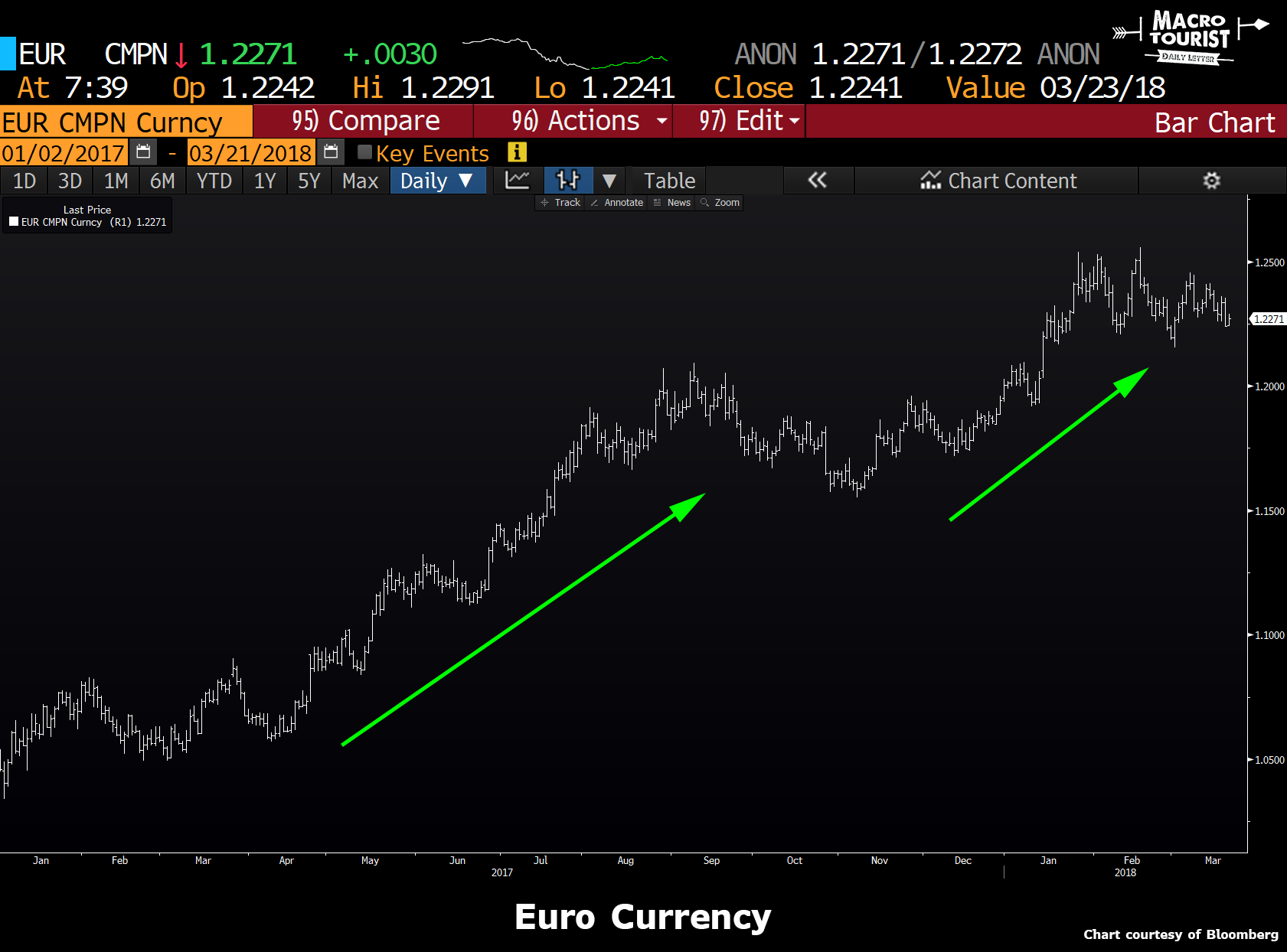I was rummaging through the Commitment of Traders (COT) data recently and was struck by the number of futures contracts with record speculative positions.
Take a gander at the Euro currency net speculative position.

And how about the five-year US treasury future?

Too many asset classes feel both stretched and crowded. But it’s easy to see why.
The Euro has been consistently climbing the wall of worry and refuses to dip in any meaningful way.

And American fixed income? It’s been a trend followers wet dream.

For traders who like to fade moves, this has been an extremely difficult market to trade. The rubber band is stretched, but keeps getting pulled back farther and farther.

There is little doubt in my mind that many trades are due for violent snap-backs. But how do you know when to take the other side?
Well, I was recently talking with my favourite millennial hedge fund manager, Sam Gruen from Lightfield Capital, and we were lamenting about how difficult it was to time the turn. Sam then mentioned one of his indicators that he likes to watch. He explained how he creates a portfolio of “consensus” trades, and then proceeds to weigh them based on volatility. Finally, he tracks this portfolio, and when it moves more than one standard deviation, he uses that a guidepost that the chances of the larger traders unwinding their position has increased. This theory is based on the fact that many of these large funds use volatility as a stop, and when the “consensus” portfolio has an outsized move, they will pull the trigger and ring the register.
I told Sam that this was a brilliant, unique way of potentially timing the market, and encouraged him to write it up. In his usual modest way, Sam explained that it wasn’t scientific enough. Not scientific enough? Considering that too many traders are looking for Hindenburg Omens or double-camel-vomit patterns, I told him that I begged to differ. I petitioned that this was the perfect MacroTourist post and asked if I could write it up. I figured a few charts, a funny picture at the top, and Bob’s your uncle – we got ourselves a classic MT article.













Leave A Comment